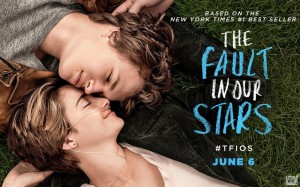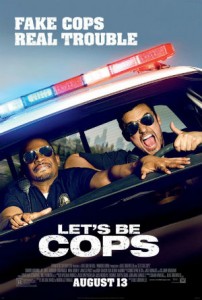Guest Post: Tara Sonenshine on “Calvary”
Posted on September 17, 2014 at 11:19 pm

My deepest thanks to Tara Sonenshine for allowing me to publish her thoughtful comments on “Calvary,” starring Brendan Gleeson as a troubled priest in a small Irish town. It is a moving story of betrayal, despair, faith, and sacrifice.
Faith in Things: How A Movie Moves You
In what do you believe? In whom do you believe?
Those are separate but related questions in the recent film, “Calvary” starring Brendan Gleeson as an Irish priest, Father James, confronted by an agonizing life and death dilemma laid out in the first few minutes of the film. The movie opens inside a confessional, where an unseen parishioner — a childhood victim of a pedophile priest, promises to kill Father James as a sacrifice to atone for the sins of the Roman Catholic Church’s clerical brethren. The audience is not sure who this parishioner is—only that the murder of Father James will take place a week later even though the parishioner is clear that Father James is not a rapist nor a “bad” man, but must be killed to draw attention to the issue of sexual abuse. The entire premise is a bit unwieldy but the movie managed to hold my attention.
The film is really about Father James and his struggle to handle not only the threat to his life by this unseen parishioner, but other earthly troubles like his suicidal daughter (he was married before becoming a priest) and ministering to a host of depraved and troubled parishioners –any of whom might be motivated to kill. Suffice it to say the story is dark, depressing and full of despair as Father James deals with corrupt people, an uncertain clergy, and acts of betrayal including the burning down of his tiny church—the physical embodiment of his religious faith.
In the end, the film leaves you wondering, in what or whom Father James and others in the film believe. The inescapable question is—where is God?
I saw “Calvary” at a time when I had been thinking about faith as part of the annual summer run-up to the Jewish High Holidays. At this time of year, Jews start preparing for the start of Rosh Hashanah—the Jewish New Year, and Yom Kippur—the Day of Atonement. Both holidays tend to concentrate the mind on religious belief, on faith, and on the more mundane Jewish practice of juggling school dates with High Holiday tickets for services and filling out membership forms for synagogues. Only in America do Jews end up deciding if you want to worship during the holiest of days in the traditional synagogue or in the “over-flow” space at a local high school. (Despite the struggle that many synagogues today face to retain membership, these two special Jewish holidays –Rosh Hashanah and Yom Kippur- draw record numbers of worshippers and strain the ability of synagogues to accommodate everyone in one place.)
In an world of e-everything, there is also a new option– to simply stay home and follow a service online, via SKYPE, or, for that matter, an audio or video recording. More and more people simply forego membership or affiliation to a permanent house of worship and look for religious services on an ad hoc basis or online. The very act of choosing a location in which to worship can become a test of faith, itself. Where is God? Is God in a physical place like a house of worship, or in a spiritual place within us? Do we even need places of worship if God is everywhere and anywhere? Why bother to find parking on the High Holidays if God is higher than a holiday—let alone pay membership dues to “belong,” to a synagogue. The internet is free. Maybe God even has his or her own Facebook page?
Having pondered the issue, I come down on the side of faith venues—a physical place of worship. There is something to be said for bricks and mortar in religion—be it a church, a mosque, a synagogue or simply a sanctuary where communities gather to worship, collectively.
Prayer is lonely business and for some, like me, it feels good to be surrounded by people during prayer. “Practicing” religion takes practice and houses of worship encourage it and symbolize it. Asked to choose between attending a service with others or “bowling alone,” I’d go with a place I can enter that is neither my home nor my work and where someone has put together an organized service to follow.
Asked to support a religious institution all-year round, I vote yes—even if I don’t use it all-year round. I want it to be there beyond me.
Organized religion has its fair share of critics. There are monetary requirements to operate religious institutions. As is revealed in “Calvary,” even the highest clergy members can be of dubious value. Houses of worship rely upon donations and donors—not all good ones. Someone has to pay to keep the lights on. Institutions, even in an age of declining faith in them, do offer places and spaces for gathering.( It’s why many of us still go to movie theaters—the sense of community and tradition.)
Houses of worship provide physical reminders that religions are ancient. They remind us that centuries before us, others came to pray. The services keep communities believing in community—and give children a reason to complain as well as the fondest of memories about things and people of meaning.
Depending on your interpretation of the movie, “Calvary,” the Irish priest either finds faith (even without a physical church) or loses it despite his best efforts. Regardless, one is left hoping that traditions continue– that we leave legacies for others—and that faith is in the eyes of the beholder but must be something to behold.
Tara D. Sonenshine teaches media and public diplomacy at George Washington University’s School of Media and Public Affairs.



